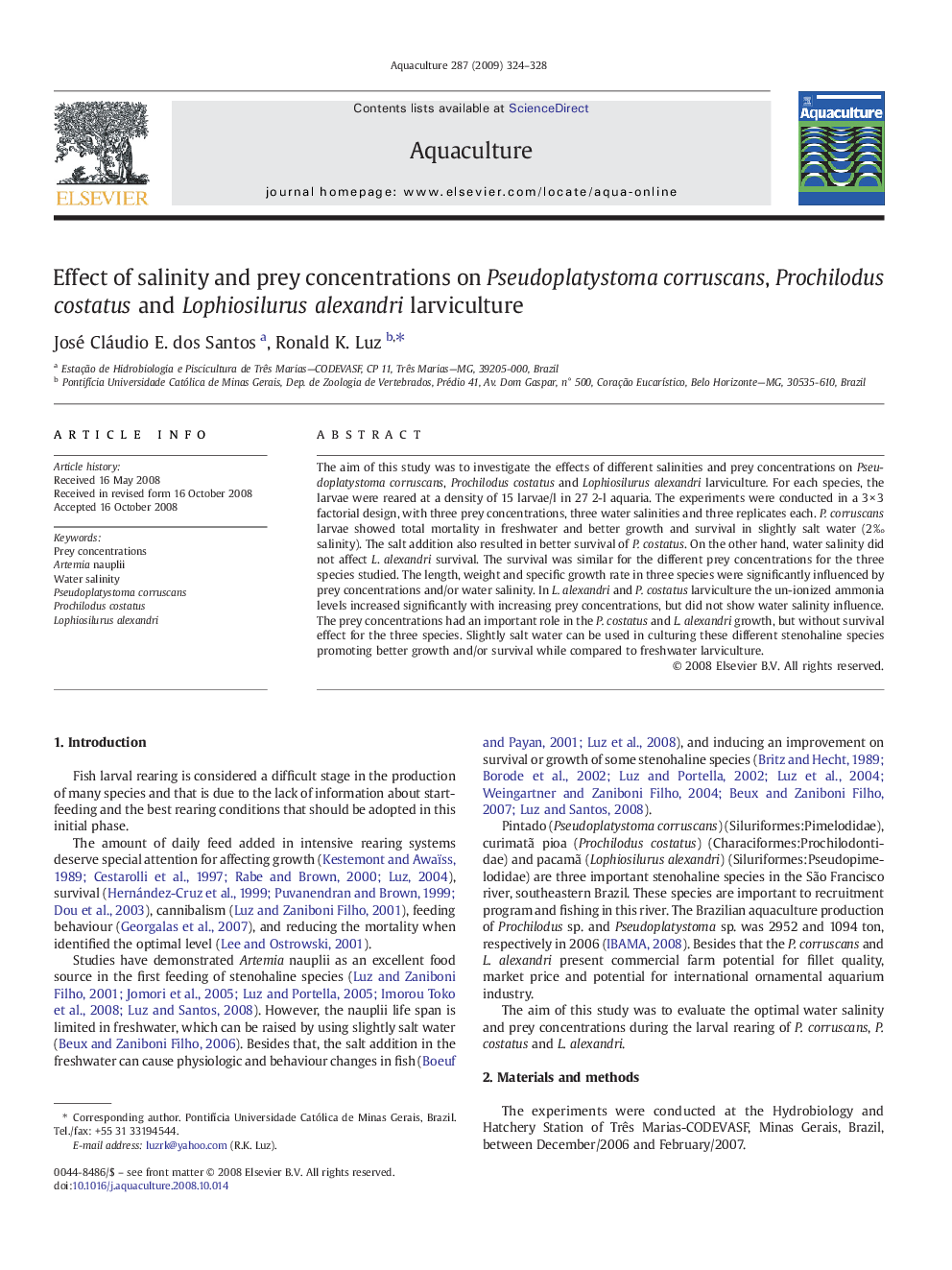| Article ID | Journal | Published Year | Pages | File Type |
|---|---|---|---|---|
| 2424403 | Aquaculture | 2009 | 5 Pages |
The aim of this study was to investigate the effects of different salinities and prey concentrations on Pseudoplatystoma corruscans, Prochilodus costatus and Lophiosilurus alexandri larviculture. For each species, the larvae were reared at a density of 15 larvae/l in 27 2-l aquaria. The experiments were conducted in a 3 × 3 factorial design, with three prey concentrations, three water salinities and three replicates each. P. corruscans larvae showed total mortality in freshwater and better growth and survival in slightly salt water (2‰ salinity). The salt addition also resulted in better survival of P. costatus. On the other hand, water salinity did not affect L. alexandri survival. The survival was similar for the different prey concentrations for the three species studied. The length, weight and specific growth rate in three species were significantly influenced by prey concentrations and/or water salinity. In L. alexandri and P. costatus larviculture the un-ionized ammonia levels increased significantly with increasing prey concentrations, but did not show water salinity influence. The prey concentrations had an important role in the P. costatus and L. alexandri growth, but without survival effect for the three species. Slightly salt water can be used in culturing these different stenohaline species promoting better growth and/or survival while compared to freshwater larviculture.
